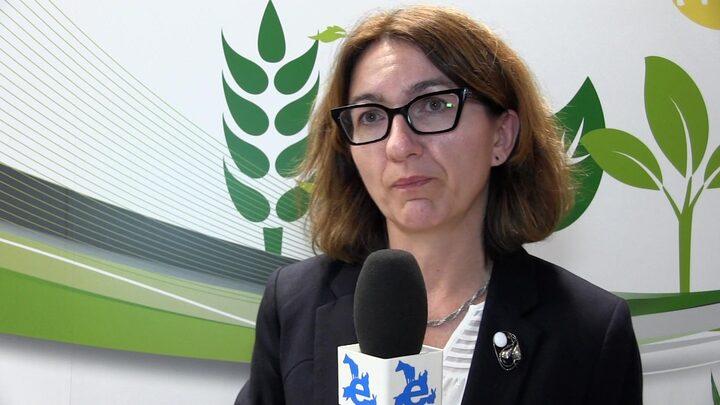Check out what is new in Poultry Industry
Find the best technical articles, forums, and videos on Poultry Industry at Engormix. Enter now and interact with the world's largest agricultural social network.
.jpg&w=3840&q=75)
Dr. Markus Wiltafsky-Martin (Evonik) talks about the impactful benefits of implementing AMINONIR®, revolutionizing nutritional analysis: Gain insights into its practical application, from sample collection to comprehensive reports, catering to diverse analytical requirements and ensuring precise, actionable data for informed decision-making.
...
Comments : 0
Recommendations: 3
Mycotoxins are secondary metabolites produced by fungi, the most abundant of which belong to the genera Aspergillus, Penicillium, and Fusarium . The conditions required for fungal development and the production of mycotoxins vary strongly with the substrate on which the fungal species develop.Because mycotoxins are mainly present in food and feed, the gut is the first target for mycotoxin toxicity, but it is also the site of the absorption of mycotoxins that leads to...
Comments : 0
Recommendations: 1
Mycotoxins are produced by fungi and can lead to sickness in humans and animals, which explains why testing for them in crops, feeds, and food products is so important and is often a regulatory and customer requirement. Fortunately, testing technologies have evolved from slow, tedious, and complicated to smart, fast, and data connected. Tests vary in their performance capabilities and suitability for field, process, or lab environments. With a number of different options, you may be...
Comments : 1
Recommendations: 0
.jpg&w=3840&q=75)
Álvaro Gordillo (BASF) explains his research presented at IPPE 2024 in Atlanta, USA, and comments on the bioavailability and microencapsulation of vitamins, during this Engormix interview....
Comments : 0
Recommendations: 1
.jpg&w=3840&q=75)
Erik Visser (Hamlet Protein) shares his opinion on the decline of feed costs and how the industry should think forward to solve labor issues, in this Engormix interview during IPPE 2024 in Atlanta, USA....
Comments : 0
Recommendations: 0
Cibele Torres (Zinpro) This study investigated the performance of broilers fed diets formulated to optimize phytate hydrolysis in the upper gut and supplemented with reduced levels of Zn in the form of Zn amino acid complexed minerals (ZnAA). A total of 3,600 d-old straight-run Ross 308 broilers were randomly distributed across 72 floor pens. Birds received 1 of 6 diets (corn-soybean meal based) from day one to 37 d with 12 replicate pens per...
Comments : 0
Recommendations: 1
.jpg&w=3840&q=75)

Travis Schaal talks about the importance of biosecurity to prevent avian influenza outbreaks
Suggested link
.jpg&w=3840&q=75)
Lara Moody (IFEEDER Executive Director) gives recommendations on important reductions and measurements to accomplish industry goals, in this Engormix interview during IPPE 2024 in Atlanta, USA....
Comments : 0
Recommendations: 0
Duarte Neves (Zinpro) This study aims to evaluate shell translucency as a novel eggshell quality parameter to predict hatchability of fertile eggs. A total of 22,140 eggs were collected from 738 broiler breeder flocks between 25 to 65 wks of age, from multiple commercial hatcheries in the US. Translucency was completed with Zinpro® BlueBox TM using a 3-point score system: TS1 = none or few small translucent spots; TS2 = several...
Comments : 0
Recommendations: 0
Duarte Neves (Zinpro) The poultry industry is facing a problem with the fertility of broiler breeder eggs. The use of elevated amounts of trace minerals such as zinc (Zn), manganese (Mn), and copper (Cu) within a broiler breeder diet has been previously linked to an increase in eggshell quality, which in turn may lead to an increased fertility rate. A parameter that has been linked to an increased eggshell quality is shell translucency. The...
Comments : 0
Recommendations: 0
ABTL Nutrition Company expresses its heartfelt appreciation to all those who visited our stall at the esteemed KIPF 2024, contributing to the success of our participation.
As a dedicated player in the nutrition industry, ABTL has consistently strived to bring a wealth of knowledge to the global...
Comments : 0
Recommendations: 2
.jpg&w=3840&q=75)
Mitsu Suyemoto (North Carolina State University) speaks on the mortality caused by Enterococcus Cecorum and her research on probiotics and other solutions to fight this disease, in this Engormix interview during IPPE 2024 in Atlanta, USA....
Comments : 1
Recommendations: 1
.jpg&w=3840&q=75)
Ravi Kulkarni (North Carolina State University) talks about Infectious Laryngotracheitis, the impact this disease has in the poultry industry, and how vaccination against it can be improved, in this Engormix interview during IPPE 2024 in Atlanta, USA....
Comments : 0
Recommendations: 0
.jpg&w=3840&q=75)
Prafulla Regmi (University of Georgia) shares his research on the interaction and movement of birds in a cage-free aviary system and explains how this technology could be implemented, in this Engormix interview during IPPE 2024 in Atlanta, USA....
Comments : 0
Recommendations: 2
.jpg&w=3840&q=75)
Ben Parsons (University of Arkansas) speaks on the cost and environmental implications of phosphorus requirements and explains the steps forward shown in his recent research, in this Engormix interview during IPPE 2024 in Atlanta, USA....
Comments : 1
Recommendations: 2
.jpg&w=3840&q=75)
Greg Mathis (Southern Poultry Feed & Research) comments on how some companies have gone back to ionophores, while there is still a broad spectrum of options in the industry, in this Engormix interview during IPPE 2024 in Atlanta, USA....
Comments : 0
Recommendations: 0
Deependra Paneru (University of Georgia) An experiment was conducted to investigate the effects of subclinical mycotoxin exposure on the growth performance and immune cell dynamics in pullets exposed to coccidiosis. Using a 2x2 factorial design, a total of 288 four-week-old Hy-Line W36 pullets were randomly allocated to four treatment groups, each containing six replicated cages with 12 birds. The experimental groups were exposed to either...
Comments : 0
Recommendations: 1
Alin Khaliduzzaman (University of Illinois Urbana Champaign) Some of the continents and countries might suffer severe food shortage in the next few decades due to climate changes, global unrest, and economic instability. Therefore, we need major technological advancement for egg and poultry production industry to deal with global animal food security and poultry welfare issues. The current hatchery practices, post-hatch grading of day-old chicks,...
Comments : 0
Recommendations: 0
00167-168.jpg&w=3840&q=75)
Dr. Anita Menconi, Regional Business Director, Specialty Nutrition, Americas at Evonik, introduces the Next Generation of Probiotics, exemplified by Ecobiol® Fizz. This soluble probiotic tablet offers a fast and convenient solution for supporting a naturally balanced microbiota in poultry...
Comments : 2
Recommendations: 6
.jpg&w=3840&q=75)
Constance Cullman (AFIA President & CEO) talks about sustainability in the industry, the need for better regulations, and how to reduce dependency on vitamin imports, in this Engormix interview during IPPE 2024 in Atlanta, USA....
Comments : 0
Recommendations: 0
Diego Martínez (University of Arkansas) An energy system is needed to optimize feed formulation and influence economics and sustainability. This study assessed the sensitivity of productive energy (PE) and classic net energy (CNE) to BW gain (BWG), feed conversion ratio (FCR), and net energy for gain (NEg) and maintenance (NEm), and developed models to predict BWG, FCR, and protein accretion (PAC). 1920 chicks in 96 pens were assigned to one...
Comments : 1
Recommendations: 0







.jpg&w=3840&q=75)



.jpg&w=3840&q=75)



.jpg&w=3840&q=75)




.jpg&w=3840&q=75)



.jpg&w=3840&q=75)




.jpg&w=3840&q=75)


.jpg&w=3840&q=75)


.jpg&w=3840&q=75)



.jpg&w=3840&q=75)






